Hostas, known for their lush, green foliage and stunning varieties, are a popular choice for garden enthusiasts. These versatile plants thrive in various climates and can add a touch of elegance to your garden. If you’re wondering about the best time to plant Hostas, you’ve come to the right place. In this guide, Gina Farm will delve into the intricacies of hosta planting, from when to plant Hostas to caring for your Hostas throughout the year.
Choosing the Right Hostas Varieties
Before we discuss the optimal time to plant Hostas, it’s crucial to consider the hosta varieties that will best suit your garden. Hostas come in numerous shapes, sizes and colors, making them a versatile addition to any landscape. Some popular hosta varieties include:
- Blue Hostas: These Hostas feature stunning blue-green leaves and are highly sought after for their unique coloration.
- Variegated Hostas: With their green and white striped foliage, variegated Hostas are known for their striking appearance.
- Miniature Hostas: Perfect for small gardens or containers, miniature Hostas offer a delicate charm with their tiny leaves.
- Large-Leaf Hostas: If you’re looking for a dramatic impact, large-leaf Hostas will provide an impressive presence in your garden.
Consider your garden’s size, sunlight and soil conditions when selecting hosta varieties. Each type has its specific requirements and understanding them is essential for successful cultivation.
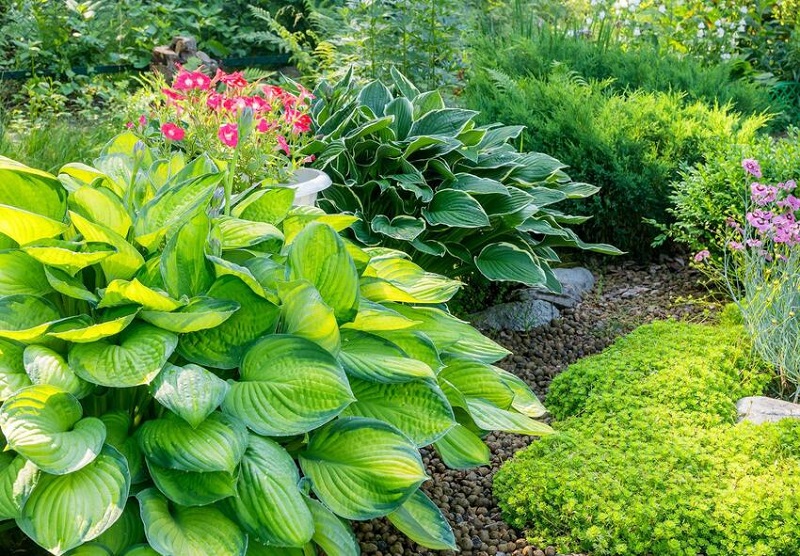
When To Plant Hostas?
Hostas are known for their adaptability, but to ensure optimal growth and vibrancy, it’s essential to plant them at the right time. The best time to plant Hostas is typically during the early spring or fall. Let’s take a closer look at these two planting seasons:
Planting Hostas in the Spring (April to June)
Spring is an ideal time to plant Hostas for several reasons:
- Temperature: As the soil begins to warm up and frost risk decreases, Hostas can establish their root systems more effectively.
- Rainfall: Spring often brings more consistent rainfall, which provides the necessary moisture for Hostas’ initial growth.
- Growing Season: Planting in spring allows Hostas to take full advantage of the growing season, resulting in lush foliage and robust plants by summer.
To plant Hostas in the spring:
- Choose a location with well-draining soil and partial to full shade, as Hostas thrive in these conditions.
- Dig a hole slightly larger than the hosta root ball and place the plant at the same depth as it was in the nursery container.
- Water the hosta thoroughly after planting and keep the soil consistently moist during the first few weeks.
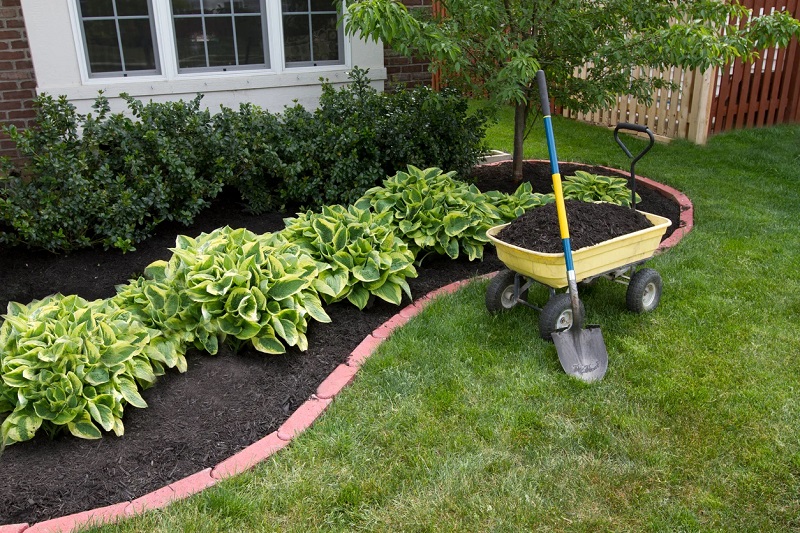
Planting Hostas in the Fall (September to October)
Planting Hostas in the fall is another excellent option, with its own set of advantages:
- Cooler Temperatures: Fall planting takes advantage of cooler weather, reducing stress on the hosta as it establishes itself.
- Less Competition: In the fall, there is less competition from other plants for resources, allowing Hostas to grow without interference.
- Establishment Before Winter: Planting in the fall allows Hostas to establish roots before winter, ensuring a strong start in the following spring.
To plant Hostas in the fall:
- Choose a location as you would in the spring, with well-draining soil and partial to full shade.
- Plant the hosta, water it thoroughly and add a layer of mulch to protect against frost.
- Ensure the soil remains consistently moist until the ground freezes, providing adequate hydration for your Hostas.

Remember to space Hostas adequately, as they can spread and grow to fill the available space. Water your newly planted Hostas regularly to keep the soil consistently moist but not waterlogged. Mulching around the plants can help retain moisture and suppress weeds.
Spring and fall are the best times to plant Hostas, with spring being preferred for most regions. Proper care and maintenance, including watering and mulching, will help ensure healthy growth and vibrant foliage for your Hostas.
Tips for Planting Hostas
Planting Hostas can be a rewarding and relatively easy gardening project. Here are some tips to help you successfully plant and care for Hostas:
Choose the Right Location
- Hostas thrive in shady to partially shady locations, making them an excellent choice for areas in your garden with limited sunlight.
- Select a spot with well-drained soil that is rich in organic matter. Amending the soil with compost can improve its texture and fertility.
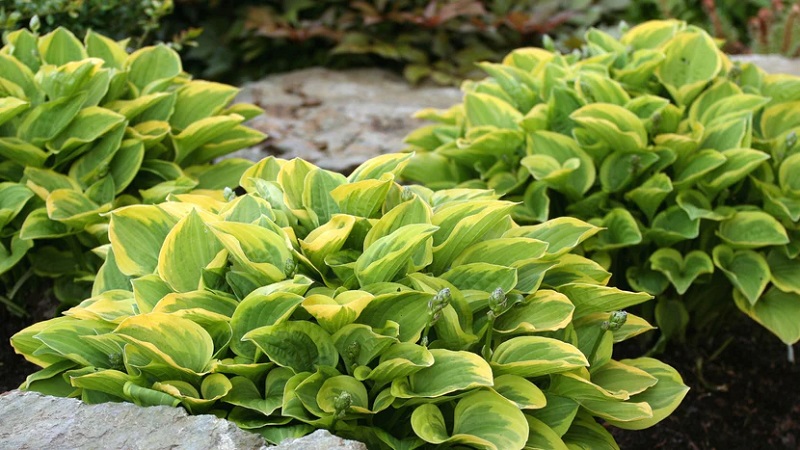
Planting Time
As mentioned earlier, spring (April to June) and fall (September to October) are the best times for planting Hostas. This allows them to establish strong roots before extreme weather conditions.
Proper Spacing
Space your Hostas appropriately, keeping in mind the mature size of the variety you’re planting. Typically, Hostas should be spaced about 18 inches to 24 inches apart.
Digging the Hole
- Dig a hole that is as deep as the root ball and about twice as wide to give the roots room to spread.
- Ensure that the top of the hosta’s root ball is level with the surrounding soil.
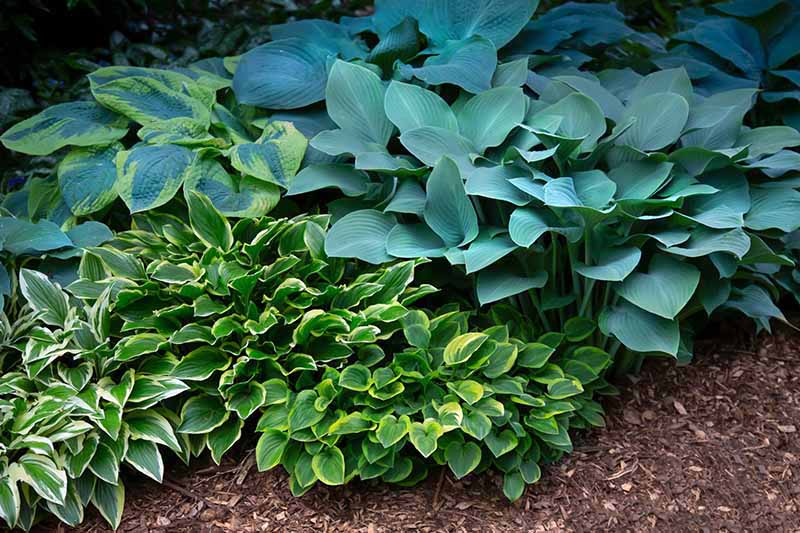
Soil Preparation
Improve the soil in the planting hole by adding organic matter such as compost or well-rotted manure. This will help retain moisture and provide essential nutrients for the Hostas.
Watering
- After planting, water the Hostas thoroughly to settle the soil and eliminate any air pockets around the roots.
- Keep the soil consistently moist, but avoid overwatering, which can lead to root rot. Water deeply when the top inch of soil feels dry.
Mulch
Apply a layer of organic mulch, such as shredded bark or leaf mulch, around the Hostas. Mulch helps conserve moisture, suppress weeds and maintain an even soil temperature.
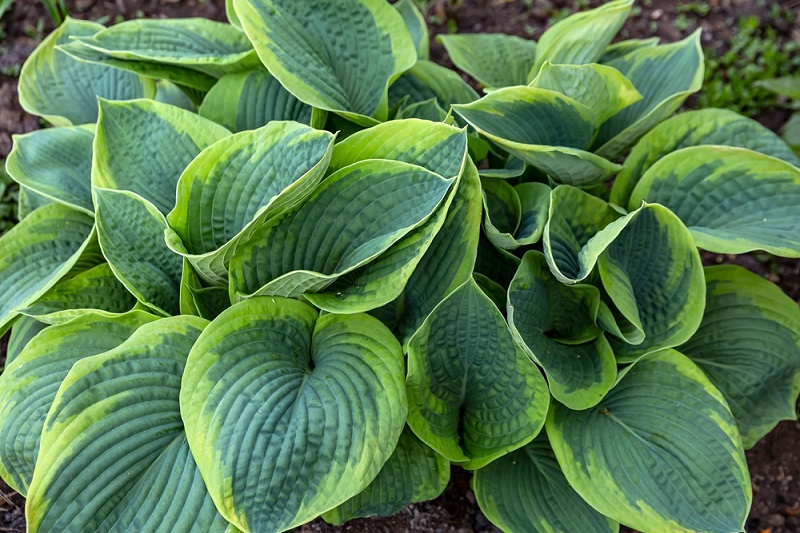
Fertilizing
Hostas are not heavy feeders, but you can apply a balanced, slow-release fertilizer in the spring to provide essential nutrients. Follow the manufacturer’s recommendations for the specific fertilizer you use.
Pests and Diseases
- Keep an eye out for common pests like slugs and snails, which can damage hosta foliage. Use natural or chemical controls if needed.
- Hostas are generally disease-resistant, but good air circulation can help prevent issues like foliar diseases.
Division
Over time, Hostas can become overcrowded. Divide mature plants every few years to rejuvenate them and create new plants. The best time to divide Hostas is in early spring before new growth begins.

Winter Protection
In areas with harsh winters, you can provide a layer of mulch or leaves to protect the Hostas’ roots from extreme cold.
With proper care and attention, Hostas can be long-lived and will reward you with their beautiful foliage year after year.
Caring for Hostas Year-Round
Caring for Hostas year-round involves several tasks to ensure these perennial plants remain healthy and vibrant. Here’s a guide to caring for Hostas throughout the seasons:
Spring
- Fertilization: Apply a balanced, slow-release fertilizer early in the spring when new shoots start emerging. Follow the manufacturer’s recommendations for the specific fertilizer you use.
- Mulching: If you didn’t mulch in the fall, apply a fresh layer of organic mulch around the Hostas in the spring. Mulch helps retain moisture and suppress weeds.
- Dividing: Early spring is the best time to divide mature Hostas if they have become overcrowded. This rejuvenates the plants and allows you to create new ones. Dig up the clump and separate it into smaller sections for replanting.
- Pest and Disease Inspection: Check for signs of pests like slugs and snails. Take action if you notice any damage. Hostas are generally resistant to diseases, but monitor them for any issues and address them promptly.
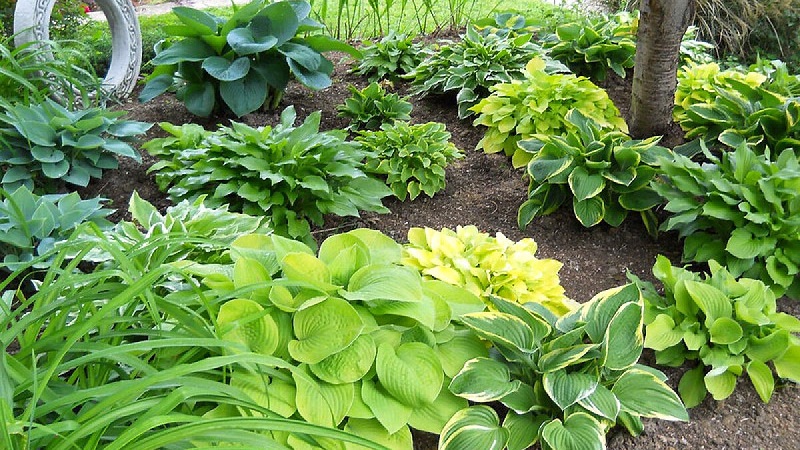
Summer
- Watering: Hostas prefer consistently moist soil. Water deeply when the top inch of soil feels dry. Watering in the morning helps prevent fungal issues by allowing the foliage to dry during the day.
- Slugs and Snails: Continue monitoring for slugs and snails and take steps to control them if needed. You can use natural or chemical controls to protect your Hostas.
- Foliage Maintenance: Remove any yellow or damaged leaves to maintain the plant’s appearance and encourage healthy growth.

Fall
- Cleaning Up: As Hostas begin to go dormant in the fall, trim back any dead or brown foliage. Remove any debris, dead leaves and weeds from around the plants to prevent pests and diseases from overwintering.
- Winter Protection: In areas with harsh winters, you can provide extra protection for your Hostas by adding a layer of mulch or leaves around the base of the plants. This helps insulate the roots from extreme cold.

Winter
- Minimal Care: Hostas are generally low-maintenance during the winter. Let them go dormant naturally and avoid watering or fertilizing at this time.
- Monitor for Vole Damage: Keep an eye out for signs of vole damage, as they can burrow under the snow and feed on hosta roots. Use deterrents or traps if necessary.
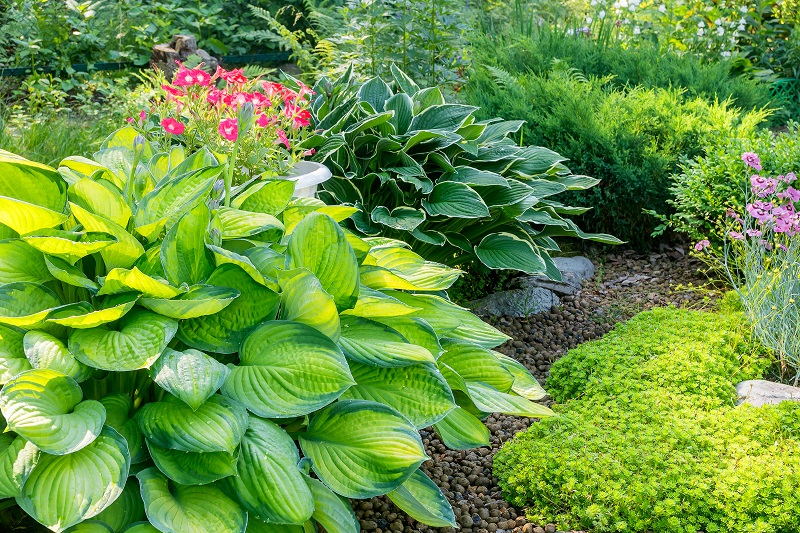
Hostas are relatively hardy plants and their care varies with the seasons. By following these year-round care tips, you can enjoy healthy, lush Hostas in your garden.
In Conclusion
In this comprehensive guide, Gina Farm has explored the best times when to plant Hostas, the importance of selecting the right varieties and the care required for their year-round maintenance. Whether you choose to plant Hostas in the spring or fall, following these guidelines will help you achieve a stunning hosta garden that stands out in your landscape.
Remember that Hostas are known for their resilience and adaptability. With the right care and attention, they can thrive in a variety of conditions, providing you with beautiful foliage year after year. So, get ready to transform your garden with the lush beauty of Hostas and enjoy a vibrant, eye-catching landscape that will surely captivate all who see it.
